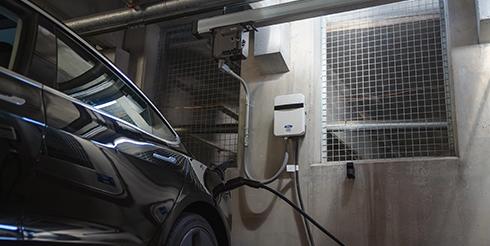Solving EVSE Deployment and Scalability Challenges with Flexible Power Distribution
🕓 5 minute read
How Starline’s Scalable Busway Systems Can Transform EV Charging Infrastructure
The rapid growth of electric vehicle adoption is putting immense pressure on charging infrastructure, with site constraints, installation costs, and scalability emerging as key challenges. As cities, businesses, and fleet operators work to expand EV charging networks, traditional power distribution methods are proving inefficient, costly, and difficult to scale.
During a recent webinar hosted by Charged, Doug Moore, Senior Product Manager, and Adrian Sanchez, Director of Commercial & Industrial Sales at Starline, discussed how the company’s busway technology provides a more flexible, cost-effective, and scalable alternative to conventional hardwired installations.
The Growing Need for Scalable EV Charging Infrastructure
EV adoption is accelerating at an unprecedented pace. In the U.S. alone, public EV charging stations have surged from fewer than 500 in 2009 to over 60,000 today, with billions of dollars in federal funding fueling further expansion. Yet, despite these efforts, charging infrastructure remains a limiting factor for many drivers, particularly in urban areas where retrofitting existing buildings is often complex and expensive.
“We're seeing an enormous shift toward electrification, especially in commercial fleets,” said Sanchez. “Businesses need charging solutions that are not just functional today but adaptable for future growth.”
This need for scalability is where busway systems stand out. Initially designed for data centers and industrial facilities, the technology is now being deployed for EV charging projects, addressing many of the pain points that have hindered large-scale deployment.
Challenges in EV Charging Deployment: What’s Holding Us Back?
A live poll during the webinar highlighted the primary challenges faced by EVSE (Electric Vehicle Supply Equipment) installers:
- Site readiness and infrastructure costs (45%)
- Overall installation costs (40%)
- Planning for scalability and future growth (30%)
- Electrical labor resource availability (10%)
These findings align with industry observations: trenching, conduit installation, and panel upgrades significantly drive up costs and complexity. Retrofitting older buildings or multi-level parking structures further complicates matters.
“We constantly hear from customers struggling with the limitations of traditional wiring methods,” said Moore. “If you need to add more chargers a few years down the line, hardwired solutions require extensive rework, increasing costs and downtime.”

How Starline’s Busway System Provides a Flexible Alternative
Starline’s busway systems offer a modular, overhead power distribution solution that eliminates the need for extensive trenching or conduit runs. Instead of relying on fixed circuits, the system provides continuous access to power through an open-channel track, allowing chargers to be easily added or repositioned.
Key Benefits of Starline Busway Systems for EV Charging:
- Scalability: Power distribution can be extended or modified without major infrastructure changes.
- Cost Savings: Eliminates costly trenching and conduit installation, reducing overall project expenses.
- Speed of Deployment: Installations are significantly faster, often completed in a fraction of the time required for traditional wiring.
- Flexibility: Chargers can be installed, relocated, or upgraded as needed without requiring major electrical work.
- Safety & Reliability: Enclosed conductor bars prevent exposure to live components, while the system meets IP54 standards for protection against dust and moisture.
“Our busway system acts like an overhead power grid,” Sanchez explained. “It brings power where you need it, allowing for easy plug-and-play installation of charging equipment.”
A Smarter Approach to EV Infrastructure Deployment
With EV adoption accelerating worldwide, outdated power distribution methods can no longer keep pace with demand. Starline’s track busway technology presents a scalable, flexible, and cost-efficient alternative, eliminating many of the bottlenecks associated with traditional wiring.
As businesses and governments expand charging networks, the ability to quickly deploy, modify, and scale infrastructure will be crucial. By leveraging modular busway systems, the industry can future-proof installations while significantly reducing costs and installation time.
For more information check out the Charged webinar here.
